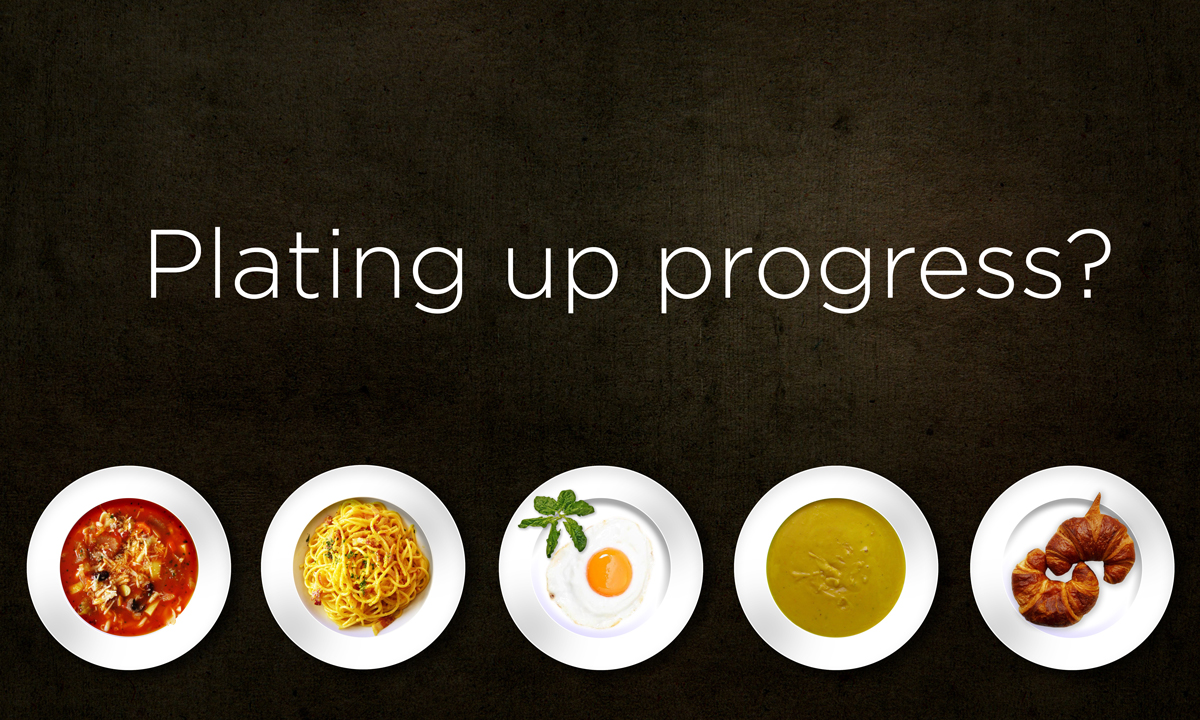This blog post is written by Wil Nicholson.

Food systems contribute at least 25% of human-made greenhouse gas emissions (1), are responsible for 70% of water consumption (2), are key drivers of terrestrial and marine biodiversity loss (3, 4), and yet about a third of the food that we produce is never actually eaten (5). Added to that, under a business as usual scenario, food demand is projected to increase globally by a further 50% before 2050 (6), we are experiencing the dual nutritional challenges of over- and under-nutrition, and we have a food industry dominated by a small number of stakeholders who, to a large extent, feed the world.
I have spent much of the last 6 years helping caterers to implement and monitor sustainable and healthy food policies, and have seen plenty of opportunities for change, but also plenty of room for improvement.
First things first, the opportunities. Our understanding of what we mean by sustainable and healthy diets, while imperfect, is growing by the day; we recognise the main challenges and know we need action. There also seems to be an increasing awareness within both businesses and consumers that we need to produce differently and eat differently.
What we seem to lack, though, is a clear consensus on the metrics that matter most, what the pathways to change should look like, how we know we are on the right tracks, and how we will hold people to account. We need to be able to take into account more than two or three impacts at the same time if we are to really make progress in the industry. For example, relying too much on greenhouse gas emissions as an indicator of sustainability can to lead to “less beef, forget about everything else”. Just focusing on food waste can, if done badly, lead to less food waste but ignoring issues around the food we produce and eat in the first place. How do we integrate both animal and human welfare into quantitative environmental and nutritional metrics? How can we accurately assess the food industry’s progress in contributing to sustainable and heathy diets?
This one year project, a collaboration between the FCRN and the Food Foundation, has two main aims. It will scope out the potential for developing a set of actionable, verifiable and industry-relevant metrics that define sustainable and healthy eating patterns; and it will build a multi-stakeholder partnership to advance the uptake of these metrics by those assessing food industry performance. Key questions we will be asking are: What metrics are already out there, and are they fit for purpose? Where do gaps exist and can we fill these gaps in a way that makes it easier to measure progress? What are the leverage points for change within the system, who are the most likely agents of that change, and what do they need in order to move the agenda forward?
Realistically, the creation of a comprehensive set of metrics that can be applied to the entire food value chain will take more than a year, so the development of a collaborative partnership that can take forward further work beyond this project’s life time is also an important aspect. The vision is for a coalition of stakeholders who are committed to advancing this work in a practical way that can itself be measured and improved over time.
To that end I would love to hear from any of you who are interested in being involved or would simply like to hear more about our plans and goals. Please get in touch at willnicholson@fcrn.org.uk or 07949 337556.
References
- Vermeulen, S. J. et al. (2012) Climate Change and Food Systems. Annual Review of Environment and Resources. 37. p.195-222
- www.unwater.org/fileadmin/user_upload/unwater_new/docs/water_for_food.p…
- Kissinger, G., et al. (2012) Drivers of Deforestation and Forest Degradation: A Synthesis Report for REDD+ Policymakers. Lexeme Consulting, Vancouver Canada, August 2012
- WWF (2015) Living Blue Planet Report
- FAO (2014) Food waste footprint. Full cost accounting (www.fao.org/3/a-i3991e.pdf)
- Alexandratos, N. and J. Bruinsma. (2012) World agriculture towards 2030/2050: the 2012 revision. ESA Working paper No. 12-03. Rome, FAO











Post a new comment »